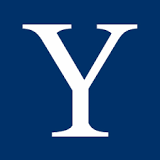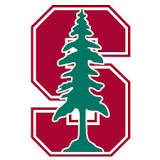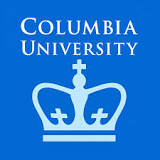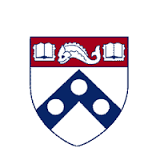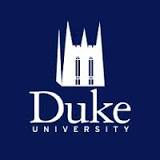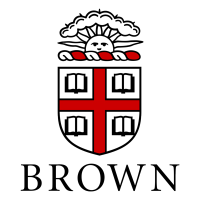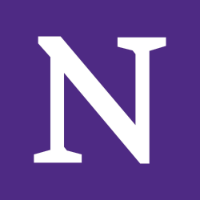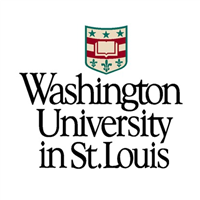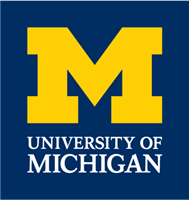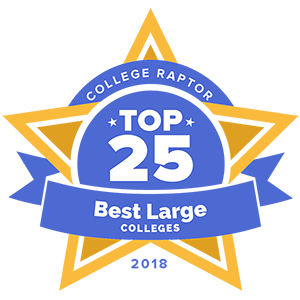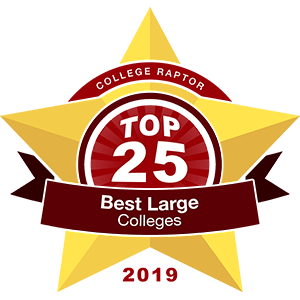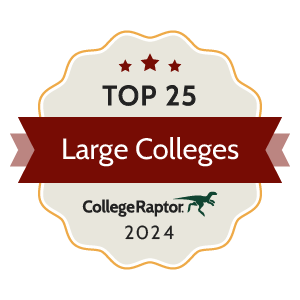 Big, beautiful campuses, large student populations, lots of clubs and sports, and loads of academic opportunities are all characteristics of this year’s top 25 best large colleges. These powerhouse schools are some of the most well-known in the US and bring tons of benefits for students and faculty alike.
Big, beautiful campuses, large student populations, lots of clubs and sports, and loads of academic opportunities are all characteristics of this year’s top 25 best large colleges. These powerhouse schools are some of the most well-known in the US and bring tons of benefits for students and faculty alike.
For this list, we count large colleges as having over 10,000 total undergraduate and graduate students enrolled.
Big student bodies, big facilities, and big reputations—these top 25 best large colleges are the best the biggest have to offer. Check them out below!
Top 25 Best Large Colleges | 2024
Harvard University has turned out some amazing alumni. In fact, the school has more alumni, researchers, and faculty that have won Nobel Prizes and Field Medals than any other school in the world. Alumni also include eight U.S. presidents, 188 living billionaires, and 110 Olympic medalists. The most common majors include Econometrics and Quantitative Economics, Social Sciences, and Computer Science.
Location
Cambridge, MA
Institution Type
Private
Student Enrollment
31,345
The Massachusetts Institute of Technology, or MIT, offers up to a doctorate degree with many undergraduate students focusing on Computer Science and Mechanical Engineering. Mathematics and Physics are also common majors. Alumni have gone on to found companies like Intel, Koch Industries, Dropbox, and Campbell Soup.
Location
Cambridge, MA
Institution Type
Private
Student Enrollment
11,934
Yale University got its start in 1701 under the name Collegiate School, getting its current name in 1718. Their motto, “lux et veritas,” means “light and truth” in Latin. The university is made up of fourteen schools including the undergraduate college, twelve professional schools, and the Yale Graduate School of Arts and Sciences. Yale’s acceptance rate is just 5.4%.
Location
New Haven, CT
Institution Type
Private
Student Enrollment
14,567
Stanford University has a 4% acceptance rate and a 98% first year retention rate. Their student-to-faculty ratio is only 5:1. The 31st president of the United States, Herbert Hoover, was a graduate of Stanford. Other alumni have included Fulbright Scholars, members of Congress, astronauts, and billionaires. Known as the Stanford Cardinals, their colors are cardinal and white.
Location
Stanford, CA
Institution Type
Private
Student Enrollment
17,680
The University of Chicago receives over 37,900 applications though only about 2,400 were accepted. Therefore, the school has a 6.5% acceptance rate. The school is made up of their undergraduate college and five graduate research divisions. They also have campuses all over the world from Hong Kong to Paris.
Location
Chicago, IL
Institution Type
Private
Student Enrollment
18,832
Columbia has a very selective acceptance rate of 4.4%, accepting only about 2,700 students out of over 61,000 applicants. Top choices in regard to majors include Econometrics and Quantitative Economics, Computer Science, and Political Science and Government. It’s the oldest institution of higher education in the state, founded before the Declaration of Independence.
Location
New York City, NY
Institution Type
Private
Student Enrollment
33,776
The University of Pennsylvania was founded in 1740, primarily by Benjamin Franklin, who was also their first president. Franklin Field, where the Quakers play in the NCAA Division I – Ivy League, is named after the founder. With a 98% first year retention rate, 89% of students will go on to graduate in four years. 96% will graduate in six.
Location
Philadelphia, PA
Institution Type
Private
Student Enrollment
28,038
Methodists and Quakers founded Duke University in 1838. The school has produced 50 Rhodes Scholars, three Turing Award winners, and 15 Noble laureates. Known as the Blue Devils, the university’s colors are Duke blue and white. The top majors among students include Computer Science, Public Policy Analysis, and Biology.
Location
Durham, NC
Institution Type
Private
Student Enrollment
17,620
Popular majors at Brown University include Computer Science, Biology, Applied Mathematics, Economics, and Quantitative Economics. Founded in 1764, it was the first school in North America that accepted students regardless of their religion. Their women’s institution, Pembroke College, was merged into Brown in 1971. Alumni have gone on to create famous companies including ZipRecruiter, Cards Against Humanity, and CNN.
Location
Providence, RI
Institution Type
Private
Student Enrollment
10,696
Top majors at Northwestern University are Econometrics and Quantitative Economics, Digital Communication and Media, and Speech Communication and Rhetoric. A founding member of the Big Ten Conference, top sports for the Wildcats include football, basketball, baseball, and soccer. Willie the Wildcat cheers them on and the colors are purple and white.
Location
Evanston, IL
Institution Type
Private
Student Enrollment
23,409
Thomas Jefferson founded The University of Virginia. The school had a Board of Visitors that included Jefferson, James Monroe, and James Madison. Well known for its secret societies, the school is also known for their sporting accomplishments. The Cavaliers, who wear orange and blue, have over 30 championship wins.
Location
Charlottesville, VA
Institution Type
Public
Student Enrollment
26,005
Edward Sorin founded the University of Notre Dame in 1842 as a private Catholic research University. Their motto is, “Vita Dulcedo Spes” or “Life, Sweetness, Hope” – referencing the Virgin Mary. The school’s teams are known as the Fighting Irish and wear the colors blue and gold. Their mascot is the very iconic leprechaun.
Location
Notre Dame, IN
Institution Type
Private
Student Enrollment
13,139
Cornell University is made up of seven undergraduate colleges and seven graduate divisions. Some famous alumni have been Christopher Reeve, Bill Nye, E.B. White, and Anthony Fauci. 97% of students stay on after the first year, with 94% graduating within six years. Computer Science is the most popular major.
Location
Ithaca, NY
Institution Type
Private
Student Enrollment
25,582
Many students at Vanderbilt University major in Social Sciences, but others choose to pursue degrees in Multi-/Interdisciplinary Studies. Other common majors are Computer Science, Neuroscience, and Economics. The university was named in honor of Cornelius Vanderbilt, a shipping and rail magnate, due to his gift of $1 million.
Location
Nashville, TN
Institution Type
Private
Student Enrollment
13,796
Washington University in St. Louis was named after George Washington and founded in 1853. A private research university, the school receives just under 34,000 applications a year and accepts around 4,500 students. Commonly chosen majors are Computer Science, Experimental Psychology, and Finance. Top sports on campus include track, football, and soccer.
Location
Saint Louis, MO
Institution Type
Private
Student Enrollment
16,973
The University of California – Berkeley was the state’s first land-grant university and the first campus in the school system. The California Golden Bears, competing in the Pac-12 conference, have won over 100 national championships. With a 96% first year retention rate, 79% will go on to graduate within 4 years, 93% within 6.
Location
Berkeley, CA
Institution Type
Public
Student Enrollment
45,036
Johns Hopkins University was founded in 1876 and named for its first benefactor. Known as the first research university in the country, its motto in Latin is, “veritas vos liberabit,” or “the truth will set you free.” The Blue Jays men’s lacrosse team plays in the Big Ten Conference and has over 40 national titles. The two most popular majors are Cell/Cellular and Molecular Biology and Neuroscience.
Location
Baltimore, MD
Institution Type
Private
Student Enrollment
32,049
The University of North at Chapel Hill goes by several different names including UNC, Chapel Hill, and Carolina. It’s a public research university and the flagship of the school system. Enrolling students in 1795, it’s one of the oldest public schools in the country. UNC became coeducational in 1877 and began admitting African-American graduate students in 1951.
Location
Chapel Hill, NC
Institution Type
Public
Student Enrollment
31,641
The two most commonly chosen majors at University of Michigan – Ann Arbor are Computer and Information Sciences and Business Administration. However, Economics, Physiological Psychology/Psychobiology, and Experimental Psychology are also popular. Accepting just 20% of applicants, 45% of students who are accepted decide to attend the following year.
Location
Ann Arbor, MI
Institution Type
Public
Student Enrollment
50,278
A private Jesuit research university, Georgetown University was founded as the Georgetown College in 1789 by Bishop John Carroll. It’s the oldest Catholic institution of higher education in the country and offers over 40 different majors. Past graduates include Bill Clinton, Lyndon B. Johnson, senators, representatives, and other leading politicians.
Location
Washington, DC
Institution Type
Private
Student Enrollment
20,935
Tufts University receives over 31,100 applications a year and accepts 11.4% of students. It got its start as Tufts College and was a small liberal arts college. In the 1970s, it became a research university. The university offers over 70 undergraduate programs; Econometrics and Quantitative Economics and Computer Science are the most popular.
Location
Medford, MA
Institution Type
Private
Student Enrollment
13,293
Carnegie Mellon University has more graduate students than undergraduate students. Some popular majors include Electrical Engineering, Computer Science, and Business Administration and Management. A merger between Carnegie Institute of Technology and the Mellon Institute of Industrial Research in 1900 created the school we know today.
Location
Pittsburgh, PA
Institution Type
Private
Student Enrollment
15,057
The University of California in Los Angeles, a public land-grant research university, is the second-oldest branch of the school system. Its motto is “fiat lux,” or “let there be light.” Famous alumni have included Sean Astin, Francis Ford Coppola, Michael Morhaime, Jim Morrison, and Troy Aikman. It has an acceptance rate of 11.1%.
Location
Los Angeles, CA
Institution Type
Public
Student Enrollment
46,116
Emory University receives over 28,000 applications annually and has an acceptance rate of just 13%. It has a 95% first year retention rate, 83% four year graduation rate, and a 9:1 student-to-faculty ratio. There are nine academic divisions in this school including Emory College of Arts and Sciences, Laney Graduate School, Rollins School of Public Health, and others.
Location
Atlanta, GA
Institution Type
Private
Student Enrollment
14,779
The University of Southern California is an extremely large school with more graduate students than undergraduates. The most popular major by far for undergraduates is Business Administration and Management. Some notable alumni include LeVar Burton, Neil Armstrong, Will Ferrell, and George Lucas.
Location
Los Angeles, CA
Institution Type
Private
Student Enrollment
49,318
Is a Large College Right for You?
Large colleges bring a whole host of benefits to students looking to further their education. The first benefit that should be noted is the potential for a wide variety of excellent programs. Since they have a larger faculty, these schools are more likely able to build and promote strong majors and minors for their students. They may also offer more unique and niche areas of study as they have so much experience to draw from with their professors and instructors.
Larger colleges also tend to have more options in the way of clubs, sports, and extracurriculars. Students can find clubs that fit even the most niche of interests among these schools’ student bodies, and, if the club doesn’t already exist, they can create their own and quickly find students who share those interests. Large colleges may also feature state-of-the-art rec and cafeteria facilities, larger libraries, more education and career resources for students, and more research opportunities.
One side of larger colleges though that could give students pause is their likelihood for larger class sizes. These schools are more likely to have lecture hall style courses, which may not be what every student wants in their education. It can be much more difficult to stand out among the crowd or get to know the professor. Some may also feel overwhelmed by the sheer number of students in the class and on campus.
Large colleges deliver several benefits for students, but for those who may want a more tight-knit community, a small or mid-sized school may be the better option for them. But if you think a large school is exactly what you want out of your higher education experience, start making your “best colleges” list for free with our College Match Tool.
Methodology
Colleges are ranked based on a combination of factors, including graduation rates, campus diversity, endowment per student, and other data as reported via the National Center for Education Statistics (NCES) for the most recently-available enrollment year. Some colleges may have been excluded from rankings based on certain criteria, including specialization and classification. Learn about our full methodology.
 Big, beautiful campuses, large student populations, lots of clubs and sports, and loads of academic opportunities are all characteristics of this year’s top 25 best large colleges. These powerhouse schools are some of the most well-known in the US and bring tons of benefits for students and faculty alike.
Big, beautiful campuses, large student populations, lots of clubs and sports, and loads of academic opportunities are all characteristics of this year’s top 25 best large colleges. These powerhouse schools are some of the most well-known in the US and bring tons of benefits for students and faculty alike.

